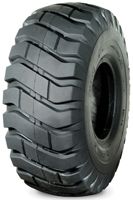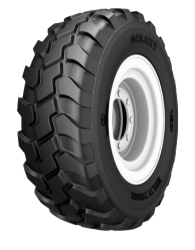NON DIRECTIONAL Construction Tires
-
 Availability: Out of StockMore Info...More InformationAdditional Info-Bearing-Bolt Pattern-Box Quantity-BrandALLIANCECenter Bore in/mm-ConstructionBIASCountry of Origin-Diameter17.5Finish-Hub Length-Industry CodeE3/L3Load Index179Load/Speed Index179A2Machine Fitment/Application-Max Load Capacity (Lbs)16080Max PSI69Mounted Diameter (Inch)-Pattern/PositionE3/L3Ply/Load Index/Star Rating16Ratio-Rim Diameter25Rim Size25X14/1.5Rim Width14/1.5Rolling Circumference155.1Section Width17.5Size17.5-25Speed Rating/Speed (MPH)A2/5Static Loaded Radius (inch)23.6Style318 SUPER GRIPSurface / Terrain-Tread Depth (32nds)33/32Tread Width-Tube Type / TubelessTUBELESSTypeE3/L3Valve-Weight (Lbs.)247.000000Wheel Back Spacing in/mm-Wheel Front Spacing in/mm-Wheel Offset in/mm-
Availability: Out of StockMore Info...More InformationAdditional Info-Bearing-Bolt Pattern-Box Quantity-BrandALLIANCECenter Bore in/mm-ConstructionBIASCountry of Origin-Diameter17.5Finish-Hub Length-Industry CodeE3/L3Load Index179Load/Speed Index179A2Machine Fitment/Application-Max Load Capacity (Lbs)16080Max PSI69Mounted Diameter (Inch)-Pattern/PositionE3/L3Ply/Load Index/Star Rating16Ratio-Rim Diameter25Rim Size25X14/1.5Rim Width14/1.5Rolling Circumference155.1Section Width17.5Size17.5-25Speed Rating/Speed (MPH)A2/5Static Loaded Radius (inch)23.6Style318 SUPER GRIPSurface / Terrain-Tread Depth (32nds)33/32Tread Width-Tube Type / TubelessTUBELESSTypeE3/L3Valve-Weight (Lbs.)247.000000Wheel Back Spacing in/mm-Wheel Front Spacing in/mm-Wheel Offset in/mm- -
 Availability: Out of StockMore Info...More InformationAdditional InfoUSED IN BOTH HARD SURFACE AND SOFT SOIL, APPLICATIONS, THE NON-DIRECTIONAL TREAD DESIGN IS IDEAL FOR BOTH ON AND OFF ROAD .Bearing-Bolt Pattern-Box Quantity-BrandGALAXYCenter Bore in/mm-ConstructionRADIALCountry of Origin-Diameter340Finish-Hub Length-Industry Code-Load Index136Load/Speed Index136A8Machine Fitment/Application-Max Load Capacity (Lbs)4940Max PSI46Mounted Diameter (Inch)39.4Pattern/PositionNON DIRECTIONALPly/Load Index/Star Rating136A8Ratio80Rim Diameter18Rim Size18X11Rim Width11Rolling Circumference113.4Section Width13.5Size340/80R-18Speed Rating/Speed (MPH)A8/25Static Loaded Radius (inch)17.7StyleMULTI-TOUGH RADIALSurface / Terrain-Tread Depth (32nds)31/32Tread Width-Tube Type / TubelessTUBELESSTypeNON DIRECTIONALValve-Weight (Lbs.)108.000000Wheel Back Spacing in/mm-Wheel Front Spacing in/mm-Wheel Offset in/mm-
Availability: Out of StockMore Info...More InformationAdditional InfoUSED IN BOTH HARD SURFACE AND SOFT SOIL, APPLICATIONS, THE NON-DIRECTIONAL TREAD DESIGN IS IDEAL FOR BOTH ON AND OFF ROAD .Bearing-Bolt Pattern-Box Quantity-BrandGALAXYCenter Bore in/mm-ConstructionRADIALCountry of Origin-Diameter340Finish-Hub Length-Industry Code-Load Index136Load/Speed Index136A8Machine Fitment/Application-Max Load Capacity (Lbs)4940Max PSI46Mounted Diameter (Inch)39.4Pattern/PositionNON DIRECTIONALPly/Load Index/Star Rating136A8Ratio80Rim Diameter18Rim Size18X11Rim Width11Rolling Circumference113.4Section Width13.5Size340/80R-18Speed Rating/Speed (MPH)A8/25Static Loaded Radius (inch)17.7StyleMULTI-TOUGH RADIALSurface / Terrain-Tread Depth (32nds)31/32Tread Width-Tube Type / TubelessTUBELESSTypeNON DIRECTIONALValve-Weight (Lbs.)108.000000Wheel Back Spacing in/mm-Wheel Front Spacing in/mm-Wheel Offset in/mm-
What Are Non-Directional Construction Tires?
Non-directional construction tires are designed with tread patterns that do not favor movement in any specific direction. Unlike directional tires, which have tread patterns optimized for forward motion and can only be mounted to rotate in one direction, non-directional tires can be mounted on any wheel and rotate in either direction without compromising performance. This versatility makes them particularly suitable for construction equipment that requires mobility in multiple directions and often operates in confined or challenging spaces.
The symmetrical tread pattern of non-directional tires provides consistent traction and wear regardless of the tire's orientation. This feature is especially useful for construction machinery that frequently changes direction, such as loaders, forklifts, and other heavy equipment.
Designs and Features of Non-Directional Construction Tires
The design and features of non-directional construction tires are centered around providing even wear and versatile performance under various conditions:
- Symmetrical Tread Patterns: The tread blocks or ribs are arranged in a symmetrical pattern that performs equally well when the tire is rotating forwards or backwards, enhancing tire life and reducing the need for frequent replacements.
- Durability: Non-directional tires are constructed with robust materials to withstand the abrasive conditions of construction sites, including resistance to cuts, punctures, and other forms of damage.
- Versatile Mounting: Since the tire performance does not depend on the direction of rotation, non-directional tires can be mounted in any position on the vehicle, which simplifies tire rotations and replacements.
- All-Round Traction: The tread design provides reliable grip on various surfaces, from loose gravel to slick mud, ensuring equipment can maneuver effectively no matter the terrain.
- Self-Cleaning Abilities: Many non-directional tires feature open tread designs that help to eject stones, mud, and debris, maintaining traction and preventing build-up within the tread grooves.
- Enhanced Stability: The balanced tread pattern often leads to improved stability for construction equipment, which is critical when operating on uneven ground or when carrying heavy loads.
Applications and Uses of Non-Directional Construction Tires
Non-directional construction tires are widely used across the construction industry due to their adaptability and reliable performance:
- Loaders and Dozers: These machines often require the ability to push and pull loads in different directions. Non-directional tires provide the necessary traction for these diverse movements.
- Articulated Dump Trucks: In off-road conditions, articulated dump trucks benefit from the even wear and consistent traction of non-directional tires.
- Forklifts and Telehandlers: Material handling equipment that operates both indoors and outdoors on various surfaces can utilize non-directional tires for better maneuverability and extended tire life.
- Backhoe Loaders: Working in excavation and loading, backhoe loaders need tires that offer stability and grip in multiple directions as they pivot between tasks.
- Compaction Equipment: Rollers and compactors that move back and forth over materials to compress them rely on non-directional tires for consistent ground contact and even compaction.
- Graders: For creating smooth and level surfaces, graders need tires that can handle lateral and longitudinal movements with equal efficiency.
Non-directional construction tires are essential in many aspects of construction work, offering enhanced operational flexibility and cost savings through their even wear characteristics and ability to be rotated around the vehicle. They provide a practical solution for machines that face variable demands and are instrumental in maintaining productivity on dynamic construction sites.
